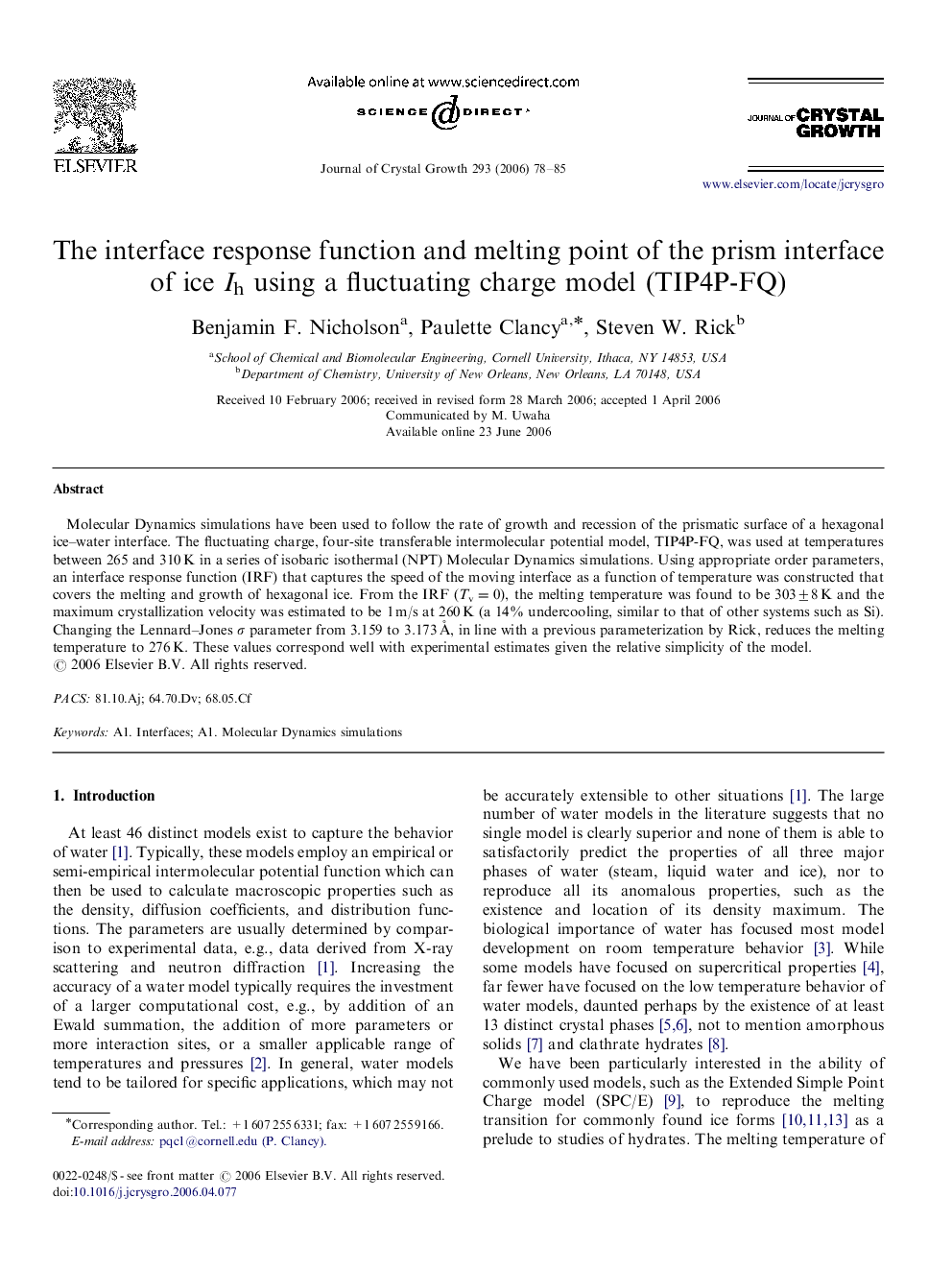| Article ID | Journal | Published Year | Pages | File Type |
|---|---|---|---|---|
| 1796672 | Journal of Crystal Growth | 2006 | 8 Pages |
Molecular Dynamics simulations have been used to follow the rate of growth and recession of the prismatic surface of a hexagonal ice–water interface. The fluctuating charge, four-site transferable intermolecular potential model, TIP4P-FQ, was used at temperatures between 265 and 310 K in a series of isobaric isothermal (NPT) Molecular Dynamics simulations. Using appropriate order parameters, an interface response function (IRF) that captures the speed of the moving interface as a function of temperature was constructed that covers the melting and growth of hexagonal ice. From the IRF (Tv=0), the melting temperature was found to be 303±8 K and the maximum crystallization velocity was estimated to be 1 m/s at 260 K (a 14% undercooling, similar to that of other systems such as Si). Changing the Lennard–Jones σ parameter from 3.159 to 3.173 Å, in line with a previous parameterization by Rick, reduces the melting temperature to 276 K. These values correspond well with experimental estimates given the relative simplicity of the model.
